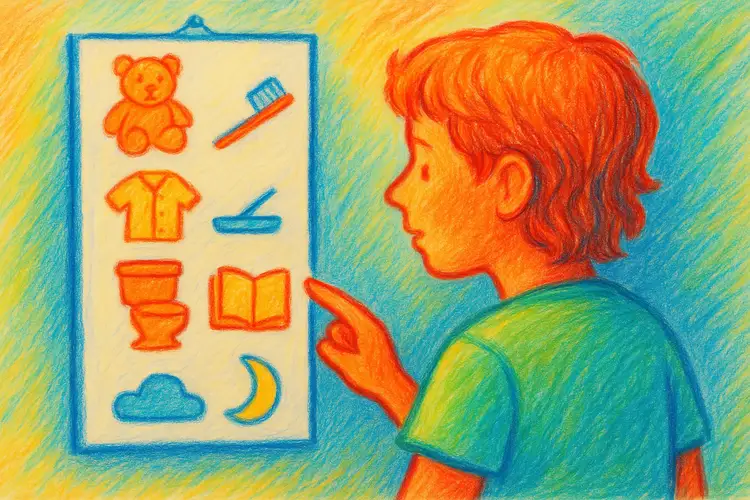Visual Schedules for Bedtime Routines: Helping Children Wind Down
Published {$created} by Carsten Blum
Evenings can be tough. Children are tired, parents are tired, and small conflicts easily turn into big battles.For children with autism, ADHD, or sensory sensitivities, bedtime transitions are often even harder.Unclear expectations — or too many verbal reminders — can create stress and resistance.
Visual schedules make the process predictable. Instead of arguments, children see a calm sequence of steps that leads them toward sleep.

How Visual Cues Support Bedtime
Predictability: Children know what comes next.
Less stress: Pictures replace repeated instructions.
Independence: Children can follow the steps themselves.
Calm transitions: Visuals signal that the day is ending and rest is near.
Common Bedtime Routine Steps
Every family is different, but a bedtime routine might include:
Finish playtime
Put on pajamas
Brush teeth
Use the bathroom
Read a story
Lights off / goodnight
Visual symbols for each step — a toothbrush, pajamas, a book — make the flow concrete.
How to Create a Bedtime Schedule
List the evening steps you want to include.
Choose clear picture symbols (photos, icons, or drawings).
Arrange them in order on a chart, wall strip, or app.
Place it in the child’s bedroom or bathroom.
Let the child participate in moving symbols as each task is done.
Example Bedtime Chart
Step | Symbol | Task |
|---|---|---|
1 | 🧸 | Finish playtime |
2 | 🛌 | Put on pajamas |
3 | 🪥 | Brush teeth |
4 | 🚽 | Bathroom |
5 | 📖 | Storytime |
6 | 🌙 | Lights off |
Tips for Success
Keep it short: 5–7 steps is enough.
Stay consistent: Follow the same order each evening.
Use calming visuals: Soft colors or gentle drawings.
Make it positive: End with something enjoyable, like reading together.
Benefits Beyond Bedtime
A consistent bedtime routine doesn’t just reduce stress in the evening.It also helps children fall asleep faster, sleep longer, and wake up more rested — making mornings smoother too.
Summary
Bedtime routines don’t have to be a struggle.With a visual schedule, children understand what’s expected, parents avoid nightly battles, and the day ends on a calmer note.
Next step: Try creating a simple bedtime chart with picture symbols your child already knows.